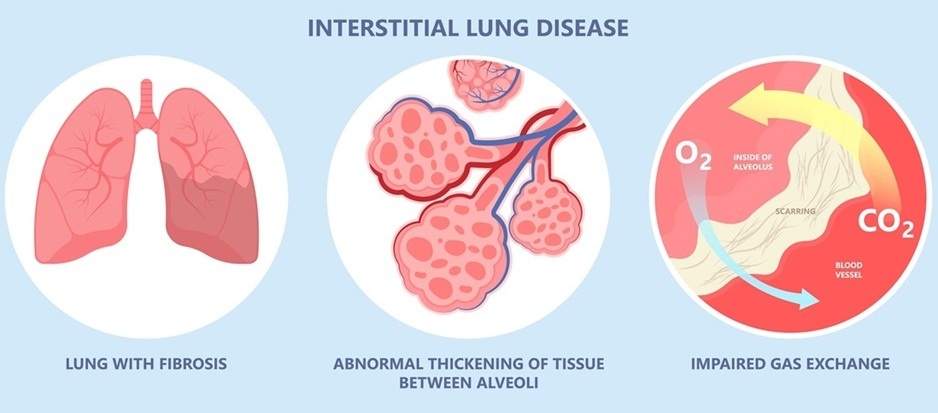Interstitial Lung Disease Test Could Identify Patients Before Symptoms Appear
Posted on 18 Oct 2025
Interstitial lung disease (ILD) is a group of chronic respiratory disorders that cause inflammation and scarring of lung tissue, often leading to irreversible damage and the need for lung transplants. The most common form, idiopathic pulmonary fibrosis (IPF), has no known cure, and current drugs can slow progression but often cause severe side effects. Now, a new biomarker-based approach could allow doctors to identify individuals at risk of ILD before symptoms develop, paving the way for earlier intervention and preventive care.
Researchers at the University of Virginia Health System (UVA Health, Charlottesville, VA, USA) are developing a method to detect biological indicators (biomarkers) in blood that can signal ILD risk. Their work builds on previous findings where plasma protein biomarkers predicted survival chances for ILD patients. Using these biomarkers, the team aims to identify adults likely to develop ILD in the future and to map molecular differences between early and late stages of the disease.

The UVA study, published in the American Journal of Respiratory and Critical Care Medicine, was conducted using data from large-scale research programs, including the Multi-Ethnic Study of Atherosclerosis (MESA) Lung Study and SPIROMICS. The team identified several plasma proteins associated with the development of new-onset ILD. Notably, some of these proteins were highly expressed in the lung tissues of affected patients, suggesting their role in early disease development and offering new insights into ILD pathology.
This biomarker-driven approach could help identify individuals at higher risk for ILD and enroll them in preventive clinical trials before significant lung damage occurs. The method may also complement imaging and genomic tools to enhance diagnostic precision and enable earlier therapeutic intervention. By uncovering molecular pathways involved in ILD, the study could lead to personalized treatment strategies and contribute to reducing lung transplant dependency in the long term.
“We aim to identify blood biomarkers that predict both the development of ILD and survival in patients with disease,” said John S. Kim, MD, who is leading the research team. “We hope these biomarkers can complement other tools like lung imaging and genomics to identify adults at higher risk of developing ILD, which will be crucial to developing treatments aimed at preventing this disease.”
Related Links:
UVA Health















